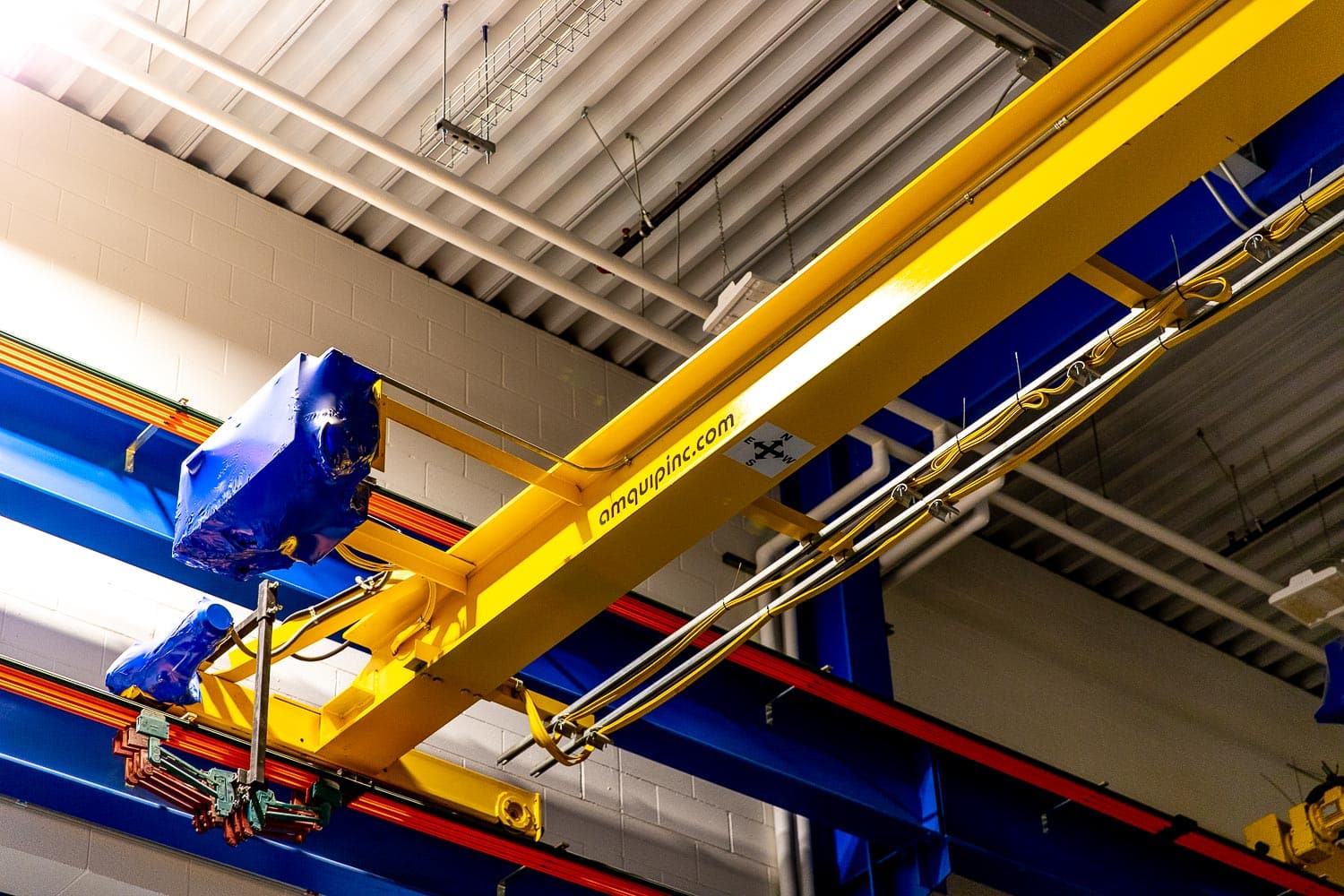
Overhead cranes allow you to efficiently move heavy or bulky loads through your facility. An overhead crane can help you save space, optimize productivity, and safely handle materials. You can easily move product whilst reducing the risk of damage or injuries. Speak to one of our qualified crane specialists for help determining what overhead crane is right for your next project.
Jib cranes are extremely versatile and can be used in a singular workstation or to serve several stations in your facility. Increase your workplace productivity and safety with a jib crane. Our jib cranes are designed for easy operation and to help you get the most out of your equipment. Contact us for help finding the right jib crane for your operation.
Regardless of your line of work, you deserve to move from one task to the next with comfort and efficiency. Workstation cranes are designed to aid you in that process by eliminating the heavy lifting. Our workstation cranes provide a user-friendly ergonomic work station for your projects. Contact us for help finding the best workstation crane for your facility.
For situations where there is no top rail or building support structure, a gantry crane can get the job done. Gantry cranes are supported by upright beams that allow you to run rails or a track. Gantry cranes are ideal for use outdoors, on loading docks, and warehouses. Contact us to find the right gantry crane solution for your needs.
Hoists allow for easy lifting of heavy loads on a vertical plane. No matter how large or small scale your project, a dependable hoist will help any operation run with more ease and efficiency. We offer a wide range of durable hoists, including the following:
If you need any advice about choosing the correct crane or hoist American Equipment can help. Contact us to speak with an experienced crane specialist about your crane needs.
This service class covers cranes which may be used in installations such as powerhouses, public utilities turbine rooms, motor rooms and transformer stations where precise handling of equipment at slow speeds with long, idle periods between lifts are required. Capacity loads may be handled for initial installation of equipment and for infrequent maintenance.
This service covers cranes which may be used in repair shops, light assembly operations, service buildings light warehousing, etc., where service requirements are light and the speed is slow. Loads may vary from no load to occasional full rated loads with two to five lifts per hour, averaging ten feet per lift.
This service covers cranes which may be used in machine shops or paper mill machine rooms, etc., where service requirements are moderate. In this type of service the crane will handle loads which average 50 percent of the rated capacity with 5 to 10 lifts per hour, averaging 15 feet, not over 50 percent of the lifts at rated capacity.
This service covers cranes which may be used in heavy machine shops, foundries, fabricating plants, steel warehouses, container yards, lumber mills, etc., and standard duty bucket and magnet operations where heavy duty production is required. In this type of service, loads approaching 50 percent of the rated capacity will be handled constantly during the working period. High speeds are desirable for this type of service with 10 to 20 lifts per hour averaging 15 feet, not over 65 percent of the lifts at rated capacity.
This type of service requires a crane capable of handling loads approaching a rated capacity throughout its life. Applications may include magnet, bucket, magnet/bucket combination cranes for scrap yards, cement mills, lumber mills, fertilizer plants, container handling, etc., with twenty or more lifts per hour at or near the rated capacity.
This type of service requires a crane capable of handling loads approaching rated capacity continuously under severe service conditions throughout its life. Applications may include custom designed specialty cranes essential to performing the critical work tasks affecting the total production facility. These cranes must provide the highest reliability with special attention to ease of maintenance features.
You’re viewing the finished product of American Equipment’s website for the purpose of showcasing Ranksey’s portfolio.